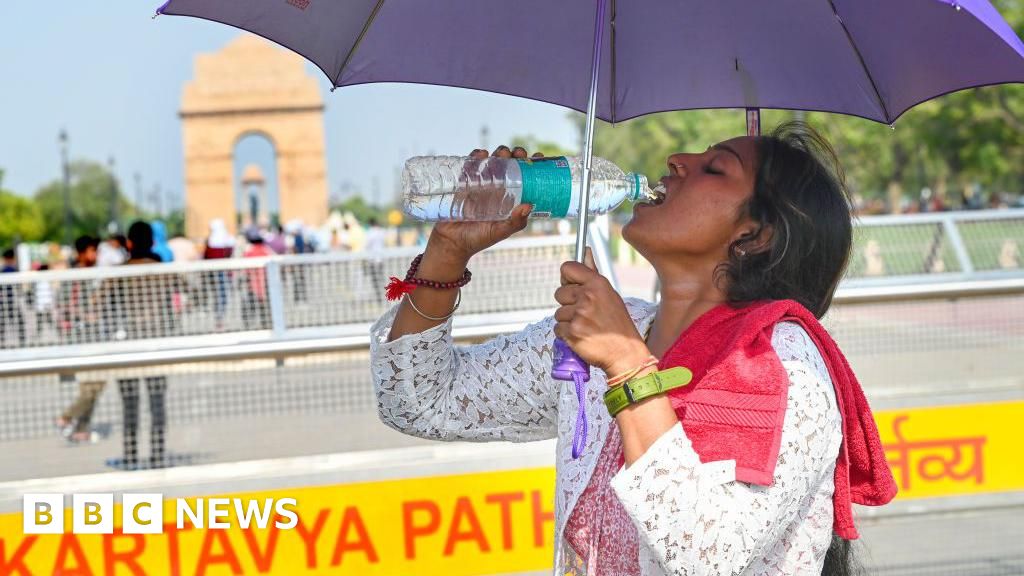At least 54 people have died due to the heatwave in various parts of India. The deaths are reported from Bihar with 32 casualties. Other affected states include Odisha (10 deaths), Jharkhand (5 deaths), Rajasthan (5 deaths), and Uttar Pradesh (1 death).

Also Read: Iceland Volcano Erupts Again, Streams of Lava Reach Town’s Defensive Walls
Maximum temperatures have soared to 45-48°C in several regions including Delhi. Delhi experienced an unprecedented high of 46.8°C, the highest in 79 years.
Temperatures were above normal, ranging from 3-6°C higher in many parts of Northwest, Central, and East India.
The heatwave has affected Bihar, Odisha, Jharkhand, Rajasthan, Delhi and other parts of Northwest, Central, and East India.
Maximum temperatures in the range of 42-45°C were observed in West Madhya Pradesh, Chhattisgarh, Coastal Andhra Pradesh, Yanam, isolated pockets of Gujarat, Telangana, and Rayalaseema.
In Bihar, 17 deaths were reported in Aurangabad, 6 in Arrah, 3 each in Gaya and Rohtas, 2 in Buxar, and 1 in Patna.
A 40-year-old man from Bihar’s Darbhanga died in Delhi due to heatstroke with his body temperature reaching 108°F. Odisha’s Sundargarh reported 12 deaths in the past 24 hours due to suspected heatstroke.
The India Meteorological Department (IMD) predicts light rainfall, thunderstorms and lightning in parts of Northwest India including Delhi, from May 31 to June 2.
Duststorm and light rain are expected in Delhi, Haryana, Chandigarh, and Uttar Pradesh. Heatwave conditions are likely to abate from June 1.
The Southwest Monsoon has already set in over Kerala and parts of Northeast India. The IMD predicts further advancement of the monsoon into parts of Lakshadweep, Kerala, Karnataka, Tamil Nadu, Assam, Meghalaya, Sub-Himalayan West Bengal and Sikkim in the next few days.
The Rajasthan High Court has urged the central government to declare a national emergency due to the heatwave.
The court directed the state government to establish compensation funds for families of heatwave victims and suggested declaring such heatwaves as national calamities for better mobilization of relief efforts.
Delhi is facing a severe water crisis by the heatwave with the government urging Haryana to release additional water.
Power demand in Delhi hit an all-time high leading to power cuts in various parts of North India. Authorities have restricted water supply to once a day in some parts of Delhi to manage the shortage.
Residents are using scarves and other protective measures to guard against the heat. Authorities have advised staying indoors during peak heat hours.
A western disturbance as a cyclonic circulation over Jammu is expected to bring light rainfall and thunderstorms to Jammu-Kashmir-Ladakh-Gilgit-Baltistan-Muzaffarabad, Himachal Pradesh, and Uttarakhand from May 31 to June 2.
Also Read: Papua New Guinea: More than 2,000 Believed Buried Alive in Landslide
On 29 May 2024, New Delhi recorded a national high of 52.9 degrees Celsius (127.22 degrees Fahrenheit) in the Mungeshpur neighbourhood setting a new benchmark.
Other parts of New Delhi experienced temperatures ranging from 45.2C to 49.1C on the same day. The extreme heat claimed the life of a 40-year-old labourer in New Delhi due to heatstroke.
New Delhi’s Lieutenant Governor Vinai Kumar Saxena directed the government to implement measures to protect labourers. This includes providing water and shaded areas at construction sites and granting paid leave from noon to 3pm.
Hospitals have seen a surge in admissions due to heat-related illnesses. The Ram Manohar Lohia hospital in Delhi has set up a specialized unit to treat patients with heat-related illnesses equipped with ice baths.
In India, a heatwave is classified when the maximum temperature is 4.5C to 6.4C above normal, while a severe heatwave is when the maximum is higher than normal by 6.5C or more.
Years of research have found that climate change is causing heatwaves in India to become longer, more frequent and more intense.
A study published by New Delhi’s Centre for Science and Environment (CSE) this month highlighted that Indian cities are not cooling down at night as much as they used to. \
Also Read: US: At Least 18 Dead from Tornadoes and Storms
The maximum temperature decline at night was nearly 2C smaller compared to the 2001-10 decade. The Lancet reported a 55% increase in deaths due to extreme heat between 2000-2004 and 2017-2021. In 2021 exposure to heat caused a loss of 167.2 billion labour hours in India.
The current heatwave coincides with India’s national elections forcing many to endure extreme heat to cast their ballots.
Three election officers and a policeman in Bihar died due to heatstroke on 30 May 2024. The heat has exacerbated water and electricity shortages.
In Delhi, residents have been seen jostling for water from tankers and many areas are experiencing frequent power cuts.
Extreme temperatures have been recorded across various states including Bihar, Rajasthan, Jharkhand, and Odisha.
On 30 May 2024, ten fatalities were recorded at a government hospital in Odisha’s Rourkela region. In Bihar, three election officers and a policeman succumbed to heatstroke.
In Rajasthan, eight people, including two newborns, died of heat-related symptoms. In Jharkhand, four deaths were reported due to heat-related ailments.
Authorities are employing drones to monitor forest fires particularly in Jammu and Kashmir. In New Delhi, efforts are underway to verify the 52.9C temperature reading due to suspicions of a sensor malfunction.
Aarti Khosla, director at the research institute Climate Trends, addressed that cities are more vulnerable due to urbanization and climate change. She warned of more hot days, dry spells, and fewer rainy days.
The highest confirmed temperature ever recorded in India was 51C in Phalodi, Rajasthan, in 2016. Researchers attribute the intensifying heatwaves to human-induced climate change driven by burning fossil fuels and deforestation.
India remains heavily reliant on coal for power generation. Despite committing to a net zero emissions economy by 2070, coal continues to be central to meeting the country’s energy needs.
Also Read: Cyclone Remal Hits Bangladesh and Eastern India, Over 1 Million Evacuated





















